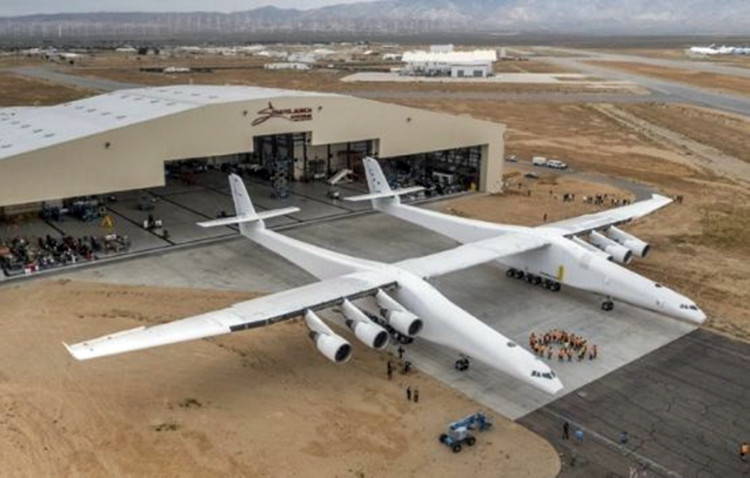The American-made "Stratolaunch," the world's largest aircraft with a wingspan of 117 meters, has been strengthened to carry heavier rockets it will launch in mid-air.
Designed by the company Stratolaunch Systems based in Seattle, Washington, Stratolaunch the aircraft is a key part of a complex system designed to commercialize the air-launch of satellite-carrying rockets capable of reaching Low Earth Orbit (LEO). The company began with one satellite-carrying rocket, the small Pegasus XL, and since then has developed three new launch vehicles, which it revealed recently.
The trio of new launch vehicles will be able to carry heavier payloads than Pegasus XL. Pegasus, however, can only loft small payloads of up to 443 kilograms into LEO, making it unsuitable for heavier satellites. The new Stratolaunch launch vehicle family consists of a:
* Medium Launch Vehicle (MLV) that can boost 3.4-ton payloads to LEO. This vehicle is suitable for short satellite integration timelines while being affordable to launch.
* Medium Launch Vehicle-Heavy (MLV-H) is a three-core MLV variant that can deploy up to six tons to LEO.
* Medium Launch Vehicle-Reusable (MLV-R) is a fully reusable spaceplane with advanced in-orbit capabilities and cargo return. The first version will be optimized for cargo launch while a follow-on variant will carry a crew.
Stratolaunch said the maiden launch for the MLV is set for 2022. MLV-H is undergoing "early development." Stratolaunch is performing a "design study" of MLV-R. The space plane concept is being developed under a program called "Black Ice."
CEO Jean Floyd said the company is excited to share for the first time some details about the development of its proprietary Stratolaunch launch vehicles. She said this launch vehicle family will offer a flexible launch capability unlike any other.
Stratolaunch is a carrier aircraft that will sling its rocket payload underneath its belly, and eject this payload at the correct altitude. It consists of two fuselages, each 72 meters long. The twin fuselages are connected to each other by its wings, which have a wingspan of 117 meters, the longest of any aircraft ever built.
Each of the twin fuselages is 72 meters long. The weight of this enormous aircraft is borne by 28 wheels: 12 main landing gear wheels and two nose gear wheels.
In January 2017, Floyd said the company's goal is to have a launch demonstration as early as 2019.
The power plant of this rocket launching monster consists of six thrust-range jet engines sourced from two used 747-400s. It generates from 205 kN to 296 kN (46,000 to 66,500 pound-force) of thrust.
The carrier aircraft is only one of three major components of this new mobile launch system. The other two are a multi-stage payload launch vehicle with a satellite payload that will be launched at high altitude from under the carrier aircraft and a mating and integration system.






